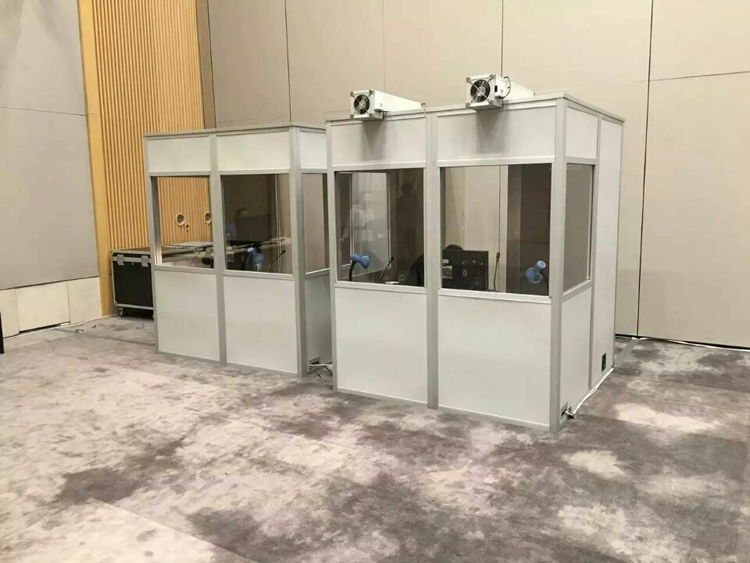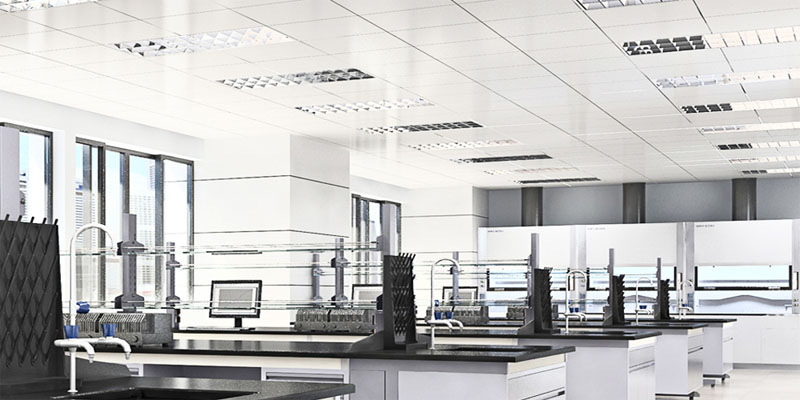When you’re setting up the venue for your conference, there are a number of factors to consider when deciding where to place your interpreter, including the size and operating requirements of your interpreting booth.
Tabletop interpreting booths require minimal space and time for preparation; all you need is a sturdy table and a chair and you’re good to go. This makes tabletop booths ideal for smaller venues and venues where setup time may be a factor. For example, you may have a limited amount of time to use a room and don’t want to spend most of it putting the interpreter’s booth together — not to mention dismantling it afterward.
Because they’re not totally soundproof, it’s a good idea to position tabletop booths with their back facing a wall or other area devoid of attendees. This will help prevent sound from the audience interfering with the interpretation and vice versa.
Full-size interpretation booths need both space and time allocated for setup. The amount of room and time needed increases depending on how big a booth you require: as you might imagine, larger booths take more time to assemble. Regardless of the booth’s actual dimensions, however, expect to allow about two hours for assembly and equipment testing.
A full-size interpretation booth should be positioned so that the interpreters have a good view of the speaker but don’t obstruct the view of the audience. Ideally this would be at the back of the room, but if the size of your venue doesn’t allow this you’ll need to give yourself extra prep time to arrange seating to accommodate the interpretation booth.
And no matter which type of interpreting booth you use, or where you position it, be sure there’s an electrical outlet nearby! It’ll be hard for a conference interpreter to speak to your audience if the microphone doesn’t have any power.


